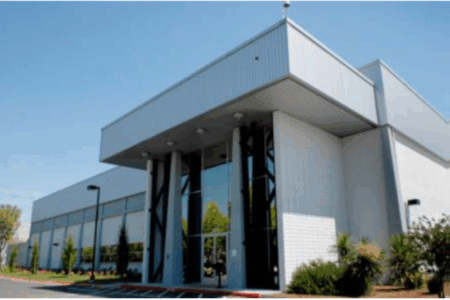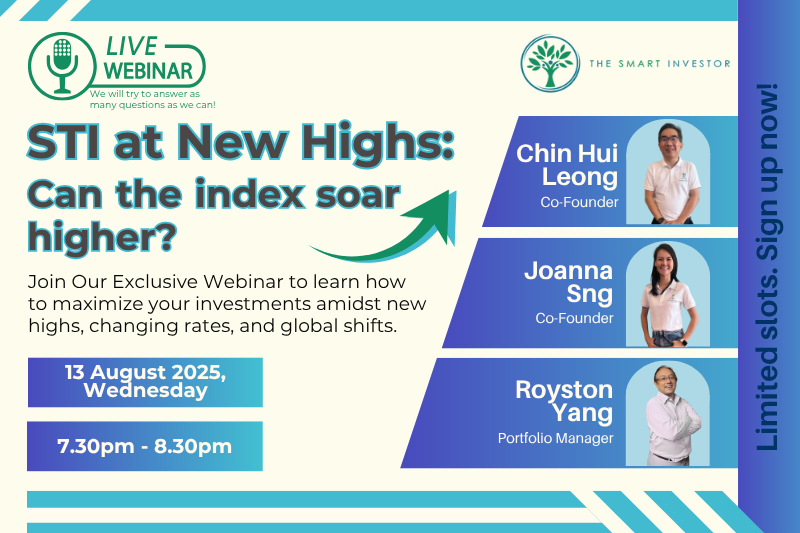Most employees today are expected to plan for their own retirement.
In Singapore, citizens and permanent residents must contribute to the Central Provident Fund (CPF) system.
However, CPF funds should not be the only asset you have to tap on in retirement, which can be supplemented by an income-generating basket of equities.
An investor wishing to build a retirement portfolio should focus on buying shares in companies that offer a combination of stability, income, and long-term growth.
Thankfully, Singapore is home to a number of blue-chip stocks that meet these criteria.
Here are three examples.
CapitaLand Integrated Commercial Trust (CICT, SGX: C38U)
CICT was the first real estate industrial trust (REIT) to list on the Singapore Exchange (SGX), and is also the largest.
It owns a portfolio of malls, offices, and integrated developments.
These are mostly located in Singapore, although it also has assets in Australia and Germany.
As a REIT, CICT must distribute 90% of its taxable income, which comes from rent paid by the tenants occupying its assets, to unitholders.
It currently trades at a yield of 4.7%.
The average lease is for a period of over three years, allowing for a stable recurring income stream.
CICT’s assets are top-in-class, including a 50% stake in luxury mall ION Orchard, established suburban malls such as Junction 8 and Tampines Mall, and Grade A office buildings like Asia Square Tower 2 and CapitaSpring.
It also benefits from the backing of a strong sponsor, Capitaland Investment (SGX: 9CI), which owns a pipeline of assets CICT may acquire in the future in order to continue growing its portfolio.
However, unitholders should bear in mind that REITs are sensitive to changes in interest rates.
REITs hold debt, and rising rates make borrowing more expensive.
Higher rates also decrease the value of properties a REIT holds, and make their yields relatively less attractive, compared to those on offer from lower-risk fixed income assets.
While we are currently in a period of falling interest rates, the income offered by REITs may also be negatively affected if these rates fall in response to slowing economic growth, which in turn, would lead to a downturn in retail spending.
Nevertheless, a REIT like CICT that owns trophy assets and has the backing of a strong sponsor is likely to provide a defensive stream of income for conservative investors.
DBS Group Holdings (DBS, SGX: D05)
DBS is not just Singapore’s largest bank.
It’s also the country’s largest company by market capitalisation, and therefore a key driver of the Straits Times Index (SGX: ^STI).
While investors often have to choose between growth or income, DBS has, in recent years, offered a compelling combination of both.
Between 2020 and 2024, its net profit grew by 142%, from S$4.7 billion to S$11.4 billion.
Meanwhile, dividends per share were up 181%, from S$0.79 to S$2.22.
Currently, DBS is offering a yield of around 5%, and the bank has a record of hiking dividends.
Indeed, between 2014 and 2024, it either maintained or increased its dividend every year except in 2018 and 2020.
It is also buying back shares, with a S$3 billion programme announced last year.
DBS has diversified sources of income.
While net interest income made up close to 65% of total income in 2024, it also generated considerable income from fees and commissions (18.7%), as well as other non-interest sources of income (16.6%).
The bank is also a leader in tech, having been named “World’s Best Digital Bank” by Euromoney and “Most Innovative in Digital Banking” by industry publication The Banker.
As with any bank, DBS is exposed to interest rate and credit cycles.
Lower interest rates will tend to reduce its net interest income, and economic slowdowns could lead to an increase in non-performing loans.
DBS is also a victim of its own success – its shares are trading at a price-to-book ratio of 2.2x, which is higher than that of its Singapore peers United Overseas Bank (SGX: U11) at 1.2x and Overseas-Chinese Banking Corporation (SGX: O39) at 1.3x.
Still, it’s arguable that DBS, as the market leader, deserves this premium, so long as it continues providing both growth and income in the years ahead.
Singapore Exchange (SGX, SGX: S68)
Until recently, the consensus was that Singapore-listed stocks were only good for dividends, with SGX outgunned by its peers in the US and Hong Kong.
This also showed up in a moribund IPO market.
It may be surprising, then, to learn that SGX has actually performed well financially over the last five years.
This is due to the fact that its business goes beyond securities to include derivatives, and fixed-income, commodities, and currencies (FICC) trading,
Between its fiscal year ending 30 June 2021 (FY2021) and FY2025, SGX’s net profit increased by nearly 46%, from S$445 to S$648 million.
This is because SGX acts as a steady “toll gate” business, collecting fees from transactions on its platform, regardless of the direction of markets.
In fact, only 2% of its FY2025 revenue came from listing fees.
Currently, SGX has a dividend yield of around 2.2%, which is lower than CICT and DBS.
However, the company has a strong record of either maintaining or increasing its dividend, having done so consistently – and without exception – since FY2009.
This is supported by a business that is highly cash generating.
Indeed, between FY2021 and FY2025, cash flows from operating activities were higher than net profit in every year except for FY2023.
Investors in SGX benefit from its status as a monopoly in one of the world’s top financial hubs.
Measures to revive the local equity market, as well as a desire to diversify investments away from the US, should also lead to rising flows of capital to Singapore, and benefit SGX’s businesses.
However, investors should be mindful that SGX does face strong competition, not just from traditional rivals like the Hong Kong Stock Exchange (SEHK: 0388), but also from players like the Indonesia Stock Exchange and Bursa Malaysia (KLSE: 1818).
Yet, SGX has shown that despite the headwinds faced by Singapore’s equity markets, it can still increase profits, generate strong cash flows, and pay investors a consistent or rising dividend.
These qualities merit its inclusion in the list of blue-chip stocks to consider for your retirement portfolio.
Get Smart: Start Today
A retirement portfolio should prioritise resilient dividends and steady compounding.
You can find this in each of the three featured companies.
CICT offers the benefits of scale, and rental income from owning stable, best-in-class properties.
DBS is a market leader that can grow both its top line and shareholder returns.
Finally, SGX is a monopoly business that benefits from fee-based income streams, regardless of the direction of the markets.
If you want to retire with a constant stream of dividends, these 5 stocks might be all you need. We’ve found 5 SG stocks that have kept paying (and growing) through inflation, rate hikes, and recessions. See what they are with our latest free report for SGX dividend investors. Click here to get instant access.Follow us on Facebook, Instagram and Telegram for the latest investing news and analyses!
Disclosure: Silas own shares in CICT and DBS.






